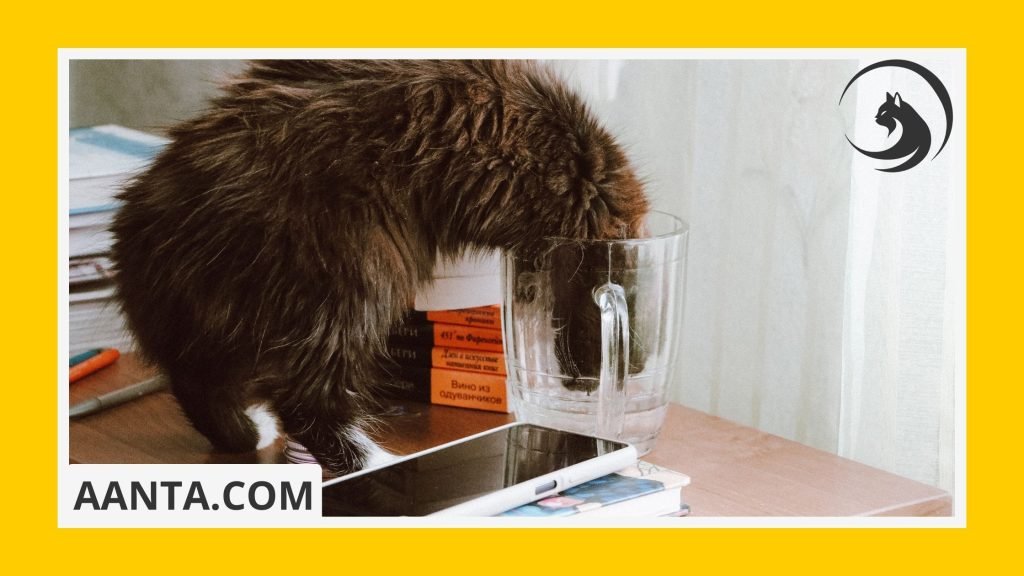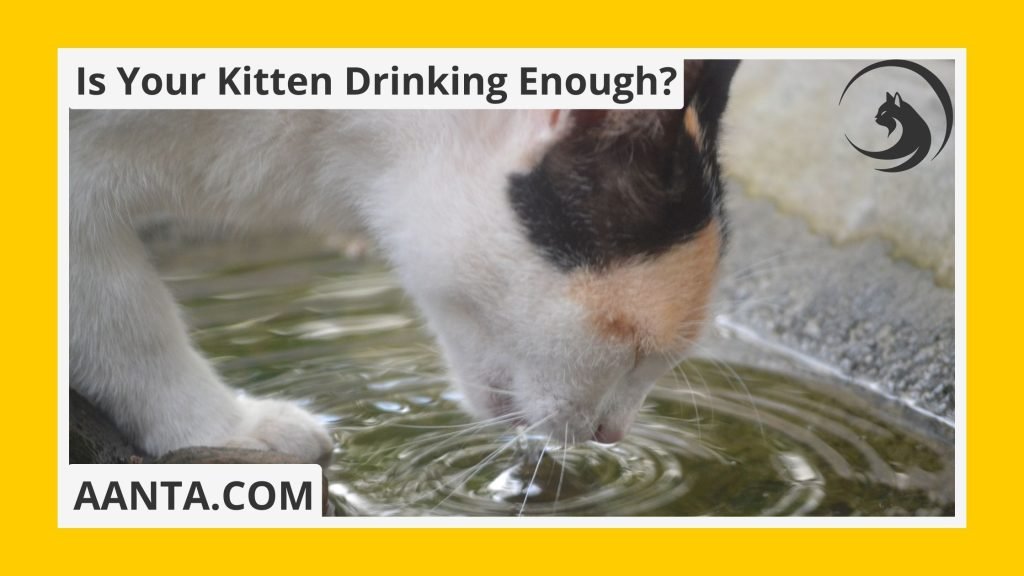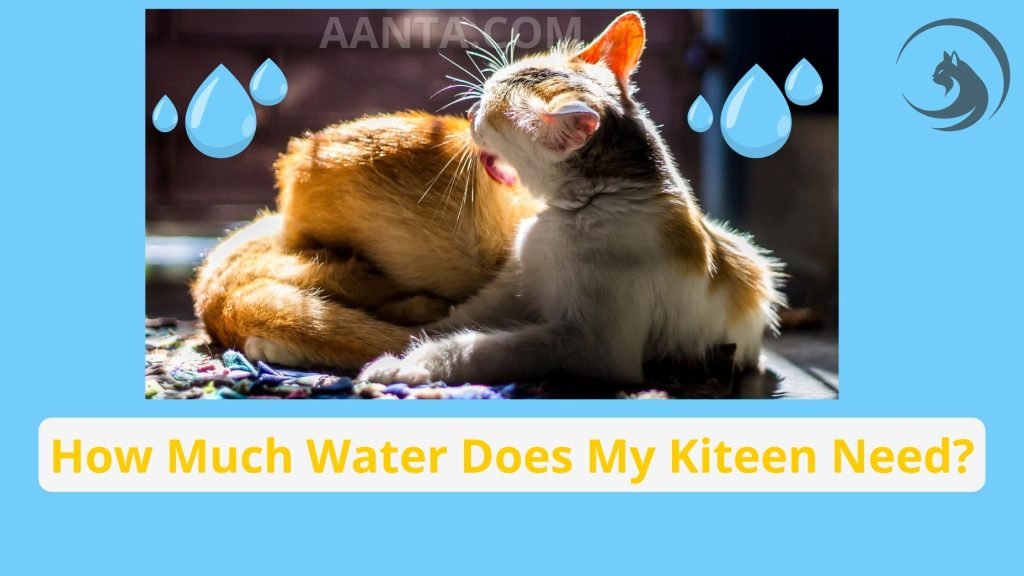Kitty dehydration arises when a cat’s body loses an excessive amount of liquid. This isn’t just about losing water; it also involves the depletion of vital minerals like chloride, sodium, and potassium.
Water is crucial for maintaining your cat’s well-being. It aids in sustaining good health by replenishing fluids lost through urine and stool. Additionally, water plays a pivotal role in your cat’s circulation, digestion, and waste elimination processes. If left untreated, feline dehydration can escalate into severe health complications.
How Much Water Should a Kitten Drink?

Our feline companions typically hold between 50% and 70% water in their bodies. Cats with higher body fat content will naturally contain less water, while leaner cats will have more. So, how much hydration does a cat need daily? Generally, an adult cat requires about 50 to 70 milliliters of fluid per kilogram of body weight each day. For instance, if your cat weighs 4 kilograms, they should consume between 200 milliliters and 280 milliliters of water daily.
They also acquire some of their hydration from the food they consume. The quantity of water a cat needs hinges on its diet. If your cat primarily eats canned food, it will likely meet most of its hydration needs through its meals. Conversely, if it consumes dry food, it will only receive approximately 10% of its required fluids from its diet, necessitating additional water intake.
When determining the optimal water intake for your cat, consider factors like environmental temperature, behavior, and activity levels. It’s also crucial to be mindful if your cat is consuming an excessive amount of water, as this could signal an underlying issue. If you notice unusual drinking patterns, consulting a veterinarian for a thorough examination is advisable.
The Importance of Hydration for Kitten

Hydration is a physiological state crucial for maintaining balance in the body’s salts, minerals, and fluids. Ensuring this balance is essential for various bodily functions.
- Organ Function: Water plays a vital role in supporting organ function.
- Nutrient Transport: It facilitates the transportation of nutrients throughout the body.
- Circulation: Adequate hydration promotes proper circulation.
- Digestion: It aids in digestion processes and helps prevent urinary tract stones.
- Toxin Elimination: Hydration supports kidney function in eliminating toxins from the body.
Catering to Individual Preferences
Every cat is unique and may have distinct preferences when it comes to hydration. Therefore, experimenting with different water supply methods may be necessary to find what works best for your feline friend.
Signs of Dehydration in Kittens
Recognizing signs of dehydration in kittens is crucial for timely intervention. Some common indicators include:
- Dry Gums: Dehydrated cats often have dry gums.
- Anorexia: A decrease in appetite can be a sign of dehydration.
- Decreased Skin Elasticity: Reduced skin elasticity is another symptom.
- Lethargy or Depression: Dehydration may manifest as lethargy or depression in cats.
- Increased Heart Rate: An elevated heart rate could indicate dehydration.
To assess hydration levels, gently pinch your cat’s skin; if it remains elevated or “tented” instead of springing back into place, it suggests dehydration.
Causes of Dehydration in Kittens
Dehydration in kittens can stem from various factors, including:
- Evolutionary Adaptation: Kittens have evolved from creatures adapted to arid environments, resulting in a lower natural thirst drive compared to some other animals.
- Vision Limitations: Kittens may experience nearsightedness, making it challenging for them to perceive the water’s edge in a bowl.
- Inefficient Drinking Method: Cats use a unique drinking method, forming their tongues into a J-shape to lap water. This technique, while natural for them, is not highly efficient, resulting in minimal water intake per lap.
- Preference for Fresh Water: Many cats are drawn to fresh and flowing water due to their sensitivity to the taste and appearance of water.
- Underlying Health Conditions: Certain health conditions, such as chronic kidney disease, diarrhea, or diabetes, can increase a kitten’s susceptibility to dehydration.
Understanding these factors can help pet owners take proactive measures to ensure their kittens remain adequately hydrated and healthy.

Understanding your cat’s daily water consumption is crucial for maintaining her health and well-being. Inadequate hydration can lead to dehydration, while excessive drinking might indicate underlying health issues like chronic kidney disease or diabetes. But how much water should cats drink daily, considering the fluids they obtain from food?
The Cat Water Consumption Calculator aids in estimating:
- Your cat’s daily water requirements are based on her body weight.
- The amount of water she obtains from her food.
- Whether she needs to drink additional water beyond the recommended amount.
Tips for Encouraging Hydration
Since your cat primarily consumes wet food, she likely receives significant hydration from her diet, unlike cats fed dry food who often drink more water. However, here are some tips to encourage your cat to drink more water, especially during warmer months:
- Provide multiple water sources throughout your home.
- Ensure the water is fresh and clean, changing it regularly.
- Experiment with different types of water bowls, such as ceramic or stainless steel.
- Try using a pet fountain to mimic flowing water, which many cats find appealing.
- Incorporate water-rich treats or wet food into her diet.
- Monitor her water intake and consult a veterinarian if you notice any changes.
Recommended Daily Water Intake for Kittens
Here’s a guideline for how much water kittens should ideally drink each day based on their age and weight:
- Kittens up to three months (1.4 kg): 70 ml
- Six-month-old cat (2.7 kg): 135 ml
- Medium cat (4 kg): 200 ml
- Large cat (6 kg): 300 ml
With these tips and guidelines, you can help ensure your cat remains adequately hydrated and thriving.
Hydration Matters: Tips for Ensuring Your Kitten Drinks Enough Water

Water plays a vital role in maintaining a cat’s overall health and well-being. However, some cats may struggle to consume sufficient water, particularly when dealing with conditions like kidney disease or diabetes. This can lead to various health issues, including dehydration, urinary problems, and constipation. In this blog, we’ll explore some practical methods to encourage your cat to drink more water and stay hydrated.
1. Ensure Fresh and Clean Water:
Cats are known for their cleanliness and prefer drinking from pristine water sources. Ensure your cat always has access to fresh, clean water in a sanitized bowl. Regularly change the water to maintain its cleanliness and appeal. Consider investing in a cat water fountain, as the flowing water can be more enticing to some cats.
2. Multiple Water Stations:
Increase water accessibility by placing several water containers in different areas of your home. This ensures that your cat can easily access water no matter where they are. Experiment with various bowl sizes and materials to determine your cat’s preference. Some cats may favor shallow dishes, while others may prefer deeper, wider bowls.
3. Introduce Broth or Tuna Water:
To make water more enticing, consider adding a small amount of low-sodium chicken or beef broth. The aroma and flavor may encourage your cat to drink more water. Alternatively, you can use tuna water from canned tuna in water (not oil). However, it’s essential to use these supplements sparingly and consult your veterinarian to ensure they’re safe for your cat.
4. Water Enrichment and Play:
Transform drinking water into an engaging experience for your cat by offering interactive water toys or a drip faucet to pique their curiosity. Supervise your cat during these activities to ensure their safety.
By implementing these strategies, you can help ensure that your cat remains properly hydrated, promoting their overall health and vitality.
Is Your Kitten Drinking Enough?

It’s essential to ensure that your cat receives an adequate amount of water daily. However, the required water intake can vary depending on factors such as your cat’s weight, the season, and her activity level. On average, a cat should consume around 60 ml of water per kilogram of body weight per day.
Monitoring your kitten’s water intake is crucial for her overall health and well-being. Here are some signs to help you assess if your kitten is drinking enough:
1. Skin Elasticity: Gently pinch the skin on the back of your kitten’s neck or between her shoulder blades. In a well-hydrated kitten, the skin should immediately spring back. If the skin remains tented or returns slowly, it could indicate dehydration.
2. Frequency of Urination: Keep track of how often your kitten urinates. A sufficient water intake should result in regular urination throughout the day. If you notice a decrease in urination frequency, it may indicate dehydration.
3. Moisture of the Gums: Lift your kitten’s lip and press your finger against her gums. Hydrated kittens will have moist and pink gums, while dehydrated kittens may have dry or sticky gums.
4. Appearance of Urine: Examine the color and clarity of your kitten’s urine. Healthy urine should be pale yellow and clear. Dark or cloudy urine could be a sign of dehydration.
If you suspect that your kitten is not drinking enough water, it’s crucial to take prompt action. Ensure that clean, fresh water is readily available to your kitten at all times to promote proper hydration and overall health.
CONCLUSION
Ensuring your kitten’s hydration needs are met is fundamental to responsible kitten care. By actively monitoring their water intake and implementing the strategies discussed in this article, cat owners can play a pivotal role in maintaining their furry companions’ optimal hydration levels. Regularly assessing signs of hydration, providing fresh and clean water sources, and offering enticing options such as broth or interactive water toys can encourage kittens to drink more water.
Additionally, understanding the factors that influence a kitten’s water requirements, such as weight, activity level, and environmental conditions, empowers owners to make informed decisions about their hydration needs. By prioritizing hydration, cat owners contribute to their kitten’s overall well-being and enhance their quality of life, ensuring they thrive and enjoy a happy, healthy existence.
FAQs
1. What is kitten dehydration, and why is it concerning?
Kitten dehydration occurs when a cat’s body loses an excessive amount of liquid, including vital minerals like chloride, sodium, and potassium. It’s concerning because dehydration can lead to severe health complications if left untreated.
2. How much water should a kitten drink daily?
A kitten typically requires about 50 to 70 milliliters of fluid per kilogram of body weight each day. For example, a 4-kilogram cat should consume between 200 and 280 milliliters of water daily.
3. How often do cats need to drink water?
Cats prefer to sip water in small increments throughout the day, usually averaging about 10 to 12 drinking sessions daily.
4. What factors influence a cat’s water intake?
Factors like environmental temperature, behavior, activity levels, and diet influence a cat’s water intake. Cats eating primarily canned food may meet most of their hydration needs through meals, while those on dry food may require additional water intake.
5. What are the signs of dehydration in kittens?
Common signs of dehydration in kittens include dry gums, decreased appetite, reduced skin elasticity, lethargy or depression, and an elevated heart rate.
6. What are the causes of dehydration in kittens?
Dehydration in kittens can stem from factors such as evolutionary adaptation, vision limitations, inefficient drinking methods, preference for fresh water, and underlying health conditions like chronic kidney disease or diabetes.
7. How can I encourage my kitten to drink more water?
You can encourage your kitten to drink more water by ensuring fresh and clean water is readily available, providing multiple water stations, introducing broth or tuna water as supplements, and incorporating water enrichment activities like interactive water toys.
8. How can I monitor my kitten’s hydration levels?
You can monitor your kitten’s hydration levels by assessing skin elasticity, observing the frequency of urination, checking the moisture of the gums, and examining the appearance of urine.
9. What should I do if I suspect my kitten is not drinking enough water?
If you suspect your kitten is not drinking enough water, ensure clean, fresh water is readily available at all times. If the issue persists or if you notice concerning symptoms, consult a veterinarian for further evaluation and guidance.
10. Why is proper hydration essential for kittens?
Proper hydration is essential for maintaining balance in a kitten’s salts, minerals, and fluids, supporting organ function, nutrient transport, circulation, digestion, and toxin elimination.







